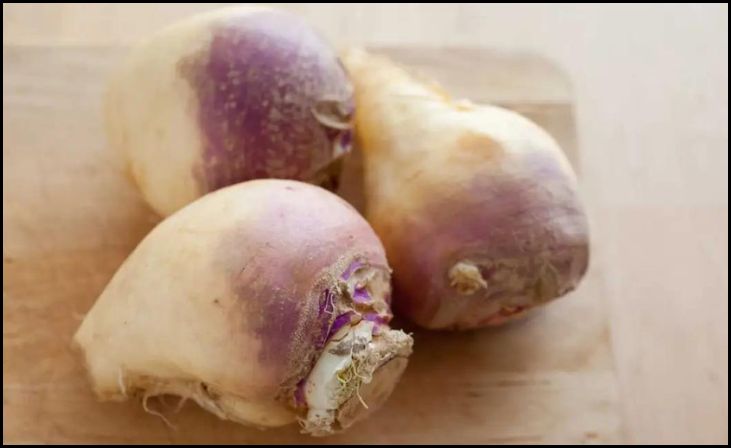Welcome to our comprehensive guide on the best vegetables for winter storage! As the chilly winds approach, it’s time to prepare your garden for a bountiful harvest that will keep your pantry stocked throughout the cold season. Growing your own winter storage vegetables not only ensures a fresh and nutritious supply but also connects you with the rhythm of nature. In this article, we’ll explore the top 10 vegetables that thrive in colder temperatures and are ideal for long-term storage. Whether you’re a seasoned gardener or just starting out, these selections promise to deliver flavor, nutrition, and sustainability straight from your backyard to your table.
1. Carrots

Carrots are a staple for winter storage due to their exceptional storage capabilities and versatility in culinary applications. Varieties such as ‘Danvers’ and ‘Nantes’ are known for their sweet flavor and robust texture, making them ideal choices for long-term storage. When growing carrots, ensure loose, well-draining soil to prevent root deformation and facilitate easy harvesting. Harvest mature carrots before the ground freezes, and store them in a cool, humid environment to maintain crispness and flavor. Properly stored, carrots can last several months, providing a nutritious addition to soups, stews, and salads throughout the winter.
2. Potatoes
Potatoes are another top contender for winter storage, offering a reliable source of carbohydrates and nutrients during the colder months. Varieties like ‘Russet Burbank’ and ‘Yukon Gold’ are well-suited for long-term storage due to their thick skins and high starch content. When planting potatoes, choose a well-drained, fertile soil and provide ample water throughout the growing season. Harvest potatoes after the vines have died back, allowing them to cure in a dry, airy location for a week before storage. Store potatoes in a dark, cool environment to prevent sprouting and maintain quality for up to several months.
3. Beets
Beets are not only delicious but also excellent candidates for winter storage, offering a rich source of vitamins, minerals, and antioxidants. Varieties such as ‘Detroit Dark Red’ and ‘Golden’ are prized for their sweet flavor and vibrant color, making them a versatile addition to winter meals. When growing beets, ensure loose, well-amended soil to promote root development and prevent cracking. Harvest beets when they reach the desired size, leaving an inch of stem intact, and store them in a cool, humid environment to maintain freshness. Properly stored, beets can last for several months, providing a nutritious boost to salads, pickles, and side dishes.
4. Cabbage
Cabbage is a cold-hardy vegetable that excels in winter storage, offering a crisp texture and mild flavor that complements a variety of dishes. Varieties like ‘January King’ and ‘Savoy’ are prized for their dense heads and resistance to cold temperatures, making them ideal choices for long-term storage. When growing cabbage, provide ample spacing between plants to allow for proper air circulation and water consistently to promote steady growth. Harvest cabbage heads when they reach full size, cutting them at the base and removing any damaged outer leaves. Store cabbage heads in a cool, humid environment, such as a root cellar or refrigerator, to maintain crispness and flavor for several months.
5. Kale
Kale is a nutritional powerhouse that thrives in winter conditions, making it an excellent choice for both fresh consumption and winter storage. Varieties like ‘Lacinato’ and ‘Winterbor’ are known for their cold tolerance and robust flavor, making them a staple in winter gardens. When growing kale, plant in fertile, well-drained soil and provide ample sunlight for optimal growth. Harvest kale leaves when they reach the desired size, picking outer leaves first to encourage continuous growth throughout the season. Store kale leaves in a plastic bag in the refrigerator crisper drawer, where they can stay fresh for up to two weeks, providing a nutritious addition to soups, salads, and smoothies.
6. Winter Squash

Winter squash varieties such as butternut, acorn, and spaghetti squash are prized for their dense flesh and long shelf life, making them ideal candidates for winter storage. When growing winter squash, provide ample space for sprawling vines and consistent moisture to promote fruit development. Harvest squash when the skin is hard and cannot be pierced with a fingernail, leaving a few inches of stem attached. Cure squash in a warm, well-ventilated area for a week before storing in a cool, dry location. Properly stored, winter squash can last for several months, providing a flavorful addition to soups, roasted dishes, and baked goods throughout the winter.
7. Onions
Onions are a pantry staple that adds flavor and depth to a wide range of dishes, making them essential for winter storage. Varieties like ‘Yellow Storage’ and ‘Red Wethersfield’ are prized for their pungent flavor and long shelf life, making them ideal for storing through the winter months. When growing onions, plant in fertile, well-drained soil and provide consistent moisture throughout the growing season. Harvest onions when the tops have turned yellow and begun to flop over, then cure them in a warm, dry location for several weeks. Store onions in a cool, dry place with good air circulation, where they can last for several months, adding flavor to soups, stews, and savory dishes.
8. Brussels Sprouts
Brussels sprouts are a nutritious and delicious vegetable that thrives in cool weather, making them an excellent choice for winter storage. Varieties like ‘Long Island Improved’ and ‘Jade Cross’ are known for their compact growth habit and sweet flavor, making them a favorite in winter gardens. When growing Brussels sprouts, plant in fertile, well-drained soil and provide consistent moisture throughout the growing season. Harvest Brussels sprouts when the heads are firm and tightly closed, starting from the bottom of the stalk and working upward. Store harvested Brussels sprouts in the refrigerator crisper drawer, where they can stay fresh for up to two weeks, adding a flavorful twist to roasted vegetable medleys and savory side dishes.
9. Turnips
Turnips are a versatile root vegetable that excels in winter storage, offering a crisp texture and mild flavor that pairs well with a variety of dishes. Varieties like ‘Purple Top White Globe’ and ‘Tokyo Cross’ are prized for their sweet, tender roots and resistance to cold temperatures, making them ideal for storing through the winter months. When growing turnips, plant in fertile, well-drained soil and provide consistent moisture throughout the growing season. Harvest turnips when they reach the desired size, pulling them from the ground and removing any damaged foliage. Store harvested turnips in a cool, humid environment, where they can last for several months, adding a flavorful kick to soups, stews, and roasted vegetable medleys.
10. Rutabagas

Rutabagas are a hearty root vegetable that thrives in cool weather, making them an excellent choice for winter storage. Varieties like ‘American Purple Top’ and ‘Gilfeather’ are prized for their sweet, nutty flavor and dense flesh, making them ideal for storing through the winter months. When growing rutabagas, plant in fertile, well-drained soil and provide consistent moisture throughout the growing season. Harvest rutabagas when they reach the desired size, pulling them from the ground and removing any damaged foliage. Store harvested rutabagas in a cool, humid environment, where they can last for several months, adding a flavorful twist to soups, stews, and roasted vegetable medleys.
Conclusion
As you embark on your journey to grow the best vegetables for winter storage, remember that patience and care are key. By selecting the right varieties and providing proper storage conditions, you can enjoy a rich harvest that sustains you through the coldest months. Gardening not only nourishes the body but also the soul, fostering a deeper connection to the earth and its cycles. So, roll up your sleeves, dig into the soil, and savor the rewards of your labor as you fill your pantry with nature’s bounty. Here’s to a season of abundance and the joy of homegrown goodness!




